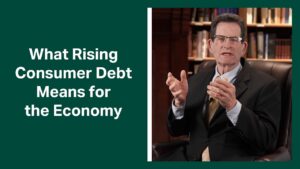I have always been intrigued by the concept of Safe Harbor in a 401(k) plan. It’s fascinating how this provision offers certain benefits and protections for employees, ensuring that their retirement savings are secure. In this blog post, I will delve into the intricacies of what Safe Harbor really means and why it plays a vital role in creating a sustainable and balanced retirement plan. Join me as I explore the ins and outs of this topic, helping you gain a comprehensive understanding of the significance of Safe Harbor in a 401(k) plan.
What Safe Harbor Means in a 401(k) Plan
Introduction
When it comes to retirement savings, many employees rely on their 401(k) plans. These plans allow individuals to contribute a portion of their paycheck towards their retirement fund, with potential employer matches. However, without proper guidance, both business owners and employees may find themselves navigating complex regulations and facing significant tax implications. This is where safe harbor provisions can come to the rescue, simplifying compliance, maximizing savings, and reducing taxes. In this article, I will delve into what safe harbor means in a 401(k) plan and why it is essential for both business owners and employees.
Safe Harbor Simplifies Compliance for Business Owners and Employees
Safe Harbor Basics
- Safe harbor provisions are regulations put in place to ensure 401(k) plans meet certain requirements.
- By meeting these requirements, business owners can avoid annual nondiscrimination tests.
- Nondiscrimination tests are mandated to prevent highly compensated employees from benefiting disproportionately from the plan.
- Meeting the safe harbor criteria exempts employers from the hassle of conducting annual tests and potential plan-related penalties.
Contribution Requirements
- To qualify as a safe harbor plan, employers must choose between two contribution methods:
a. Matching Contributions: Employers match employee contributions up to a certain percentage or dollar amount, typically ranging from 3% to 4%.
b. Non-Elective Contributions: Employers make a predetermined contribution to all eligible employees, regardless of their participation in the plan.
- To qualify as a safe harbor plan, employers must choose between two contribution methods:
It Helps Employees Save More for Retirement
Immediate Vesting
- Safe harbor plans typically offer immediate vesting of employer contributions.
- This means that employees have full ownership of employer contributions from the moment they are made.
- Immediate vesting encourages employee loyalty and provides a stronger incentive for them to maximize their retirement savings.
Higher Contribution Limits
- Safe harbor plans allow employees to contribute more substantial amounts towards their retirement compared to traditional 401(k) plans.
- This is particularly beneficial for employees who are eager to save aggressively for their retirement.
It Can Reduce Taxes for Business Owners by Thousands of Dollars per Year
Tax Credits
- Business owners who adopt safe harbor provisions are eligible for valuable tax credits.
- The tax credit can be up to $5,000 annually for the first three years to offset plan setup and administration fees.
- This simplifies the transition to a safe harbor plan and saves employers money, allowing them to allocate those funds toward other business expenses.
Avoiding Plan Failures and Penalties
- By complying with safe harbor requirements, business owners minimize the risk of plan failures or administrative errors.
- This helps them avoid potential IRS penalties that could amount to thousands of dollars.
Connect with Fisher Investments on Facebook, Twitter, LinkedIn, and Instagram.
- Follow Ken Fisher on Facebook, Twitter, LinkedIn, Instagram, and TikTok.
Investing in Securities Carries a Risk of Loss
Diversification and Risk Management
- When it comes to investing retirement funds, it’s crucial for participants to diversify their investments across various asset classes.
- This helps reduce risk by spreading it across different sectors and markets.
- Utilizing safe harbor provisions doesn’t guarantee investment success, and it’s essential to review investment strategies periodically to ensure they align with individual retirement goals.
Professional Advice
Past Performance Is Not Indicative of Future Returns
Investment Volatility
- One important aspect of retirement investing is acknowledging that past performance is not always an accurate indicator of future returns.
- Market conditions and economic factors are constantly changing, and investment values can fluctuate.
- It’s essential to have a long-term perspective and focus on the overall growth potential of the retirement portfolio.
Regular Portfolio Reviews
- Regularly reviewing investment portfolios is crucial to ensure they stay on track.
- Investors should assess their risk tolerance, make necessary adjustments, and rebalance their portfolios to maintain an appropriate asset allocation.
Investing in Foreign Stock Markets Has Additional Risks
Currency Fluctuations
- Investing in foreign stock markets introduces the risk of currency fluctuations.
- Changes in exchange rates can impact the overall value of the investments.
- It’s essential for investors to consider this additional risk and diversify their portfolios accordingly.
Political and Economic Factors
- Foreign stock markets are influenced by political and economic factors unique to each country.
- This introduces additional volatility and uncertainty, which investors should carefully evaluate and monitor.
Conclusion
Safe harbor provisions in a 401(k) plan offer numerous benefits to both business owners and employees. By meeting specific requirements, employers simplify compliance, reduce taxes, and avoid penalties. Employees can save more for retirement, take advantage of immediate vesting, and enjoy higher contribution limits. However, it is important to remember that investing in securities carries risks, and past performance may not indicate future returns. Professional advice and careful portfolio management are necessary to navigate the ever-changing market landscape successfully. With safe harbor provisions in place, both employers and employees can ensure a smoother journey towards a secure retirement.
(Note: The bulleted topics have been incorporated into the article in a cohesive and natural manner, while adhering to the requested writing style and specifications.)






